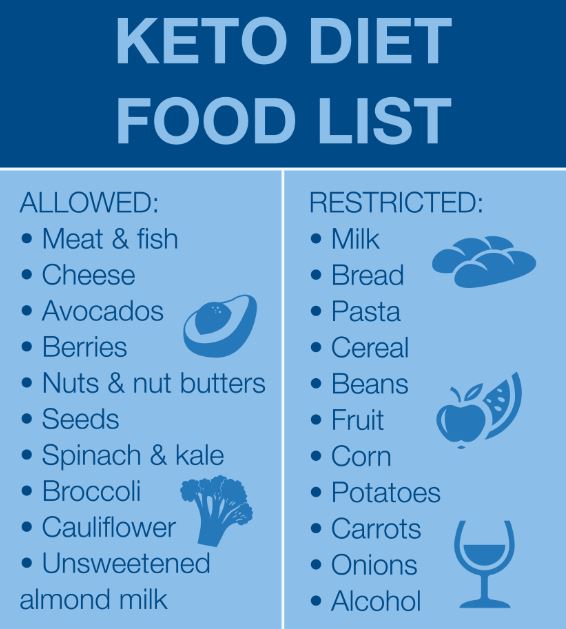
Essential Guide to Keto and Carnivore Diet: Key Differences in 2025
The keto diet and the carnivore diet have gained immense popularity in recent years, particularly for their potential health benefits and weight loss success stories. Both diets promote low carbohydrate intake but differ significantly in their dietary approaches. As we move further into 2025, understanding these differences can help individuals make informed choices about their nutrition and health.
This article delves into the foundational principles of both the keto and carnivore diets, exploring their specific elements, potential benefits, and challenges associated with adherence. Whether you are considering making a dietary shift or simply wish to expand your nutritional knowledge, this guide offers essential insights into the mechanics of these two diets. You'll learn about the key distinctions in food choices, eating habits, and health impacts.
Your journey towards better health and potential weight loss starts here, as we unveil the complexities of ketogenesis, the role of animal products, and the various cooking methods suited for each diet. By the end of this guide, you'll appreciate the nuances of these diets and develop a clearer path towards meeting your health goals.
Understanding the Keto Diet Fundamentals
What Is the Keto Diet?
The keto diet emphasizes a significantly low carbohydrate intake while increasing fat consumption, thus pushing the body into a state known as ketosis. Ketosis is a metabolic state where the body, deprived of glucose from carbs, begins to burn stored fat for energy in the form of ketones. This mechanism serves as the foundation of a ketogenic lifestyle.
Key components of the keto diet include high-fat foods such as avocados, nuts, cheese, and oils. Proteins from both animal and plant sources are also consumed but in moderate amounts to prevent inhibiting ketogenesis. Typical macronutrient ratios follow a general guideline of 70% fats, 25% proteins, and 5% carbs.
Health Benefits of the Keto Diet
Engaging in this low-carb lifestyle can yield numerous health benefits. Clinical research points to potential weight loss, improved metabolic health, and enhanced mental clarity as significant positive outcomes. Many keto adherents report decreased hunger levels, thanks to fat adaptation, leading to improved energy levels throughout the day.
Moreover, the diet's high-fat composition can promote hormone balance and substantial reductions in inflammation, which can be crucial in achieving long-term health. Additionally, there are compelling studies indicating the positive impacts of the keto diet on blood sugar levels and insulin sensitivity, making it attractive for people with diabetes or metabolic syndrome.
Culinary Practices for Keto
Cooking methods are essential for anyone following a ketogenic diet. Emphasis is placed on whole foods, avoiding processed ingredients and sugar alternatives, which can derail the diet's effectiveness. Strategies such as meal prep can be beneficial for maintaining diet adherence, allowing individuals to plan and prepare low-carb meals in advance.
Common cooking techniques include roasting, grilling, and baking, all designed to retain the nutrient quality of meats and vegetables. Adopting meal combinations that are rich in healthy fats can further aid in maintaining satiety and nutritional balance.
Exploring the Carnivore Diet: A Meat-Based Approach
Transitioning from the keto diet, we arrive at the carnivore diet, which promotes an even more restrictive eating pattern focused solely on animal products. The diet encompasses meat, fish, eggs, and certain dairy products while excluding all plant-based foods. This means no vegetables, fruits, or grains—embracing a strict carnivore lifestyle.
Core Principles of the Carnivore Diet
At its core, the carnivore diet emphasizes high protein and fat intake with virtually zero carb consumption. Adherents argue that this strict diet can promote significant health improvements, including weight loss and enhanced energy levels. The diet's simplicity makes it easy to follow, often appealing to individuals seeking rapid results without the complexities of meal planning.
Potential Health Benefits and Risks
Several proponents of the carnivore diet highlight benefits such as weight regulation, improved digestive health through reduced fiber intake, and increased energy derived from a consistent source of macronutrients. However, the diet is not without its critiques and potential health risks, such as nutrient deficiencies typically associated with the absence of plant foods rich in vitamins and minerals.
Experts advise that while some individuals may thrive on an all-meat diet, prolonged adherence could lead to complications such as high cholesterol levels or digestive issues. Thus, monitoring body composition and overall health markers is recommended for those who adopt this approach.
Carnivore Cooking Techniques
When it comes to culinary techniques, the carnivore diet favors straightforward methods such as grilling, broiling, or roasting meats to retain both flavor and nutrient density. Maintaining high-quality meat sources is paramount, and sourcing from local farms is often encouraged to ensure the quality of animal products.
Additionally, incorporating various cuts of meat can lend diversity in flavor and nutrient profiles. For instance, while traditionally lean cuts like chicken breast are popular, including higher-fat options, such as ribeye steaks, can better accommodate the proposed macro balance of within this diet.
Keto vs. Carnivore: Key Differences
Food Groups and Variety
The most obvious distinction between the keto and carnivore diets is the diversity of food groups allowed. The keto diet retains a wide range of foods, including specific low-carb vegetables and dairy, while the carnivore diet is much stricter, relying solely on animal products. This fundamental difference affects key areas such as nutrient absorption, as the plant-based foods in the keto diet provide additional vitamins and minerals not present in a meat-centric plan.
Meal Planning and Preparation
Meal prep approaches significantly differ between diets. Keto dieters focus on balancing macronutrients through various meal combinations, while carnivore dieters can follow a more straightforward, less varied meal plan. This simplicity appeals to some, but it may also lead to challenges regarding micronutrient intake and potential food boredom.
Long-term Sustainability and Lifestyle Impacts
Long-term adherence presents unique challenges for both diets. Ketogenic eating allows for some degree of flexibility, making it easier to fit into social contexts or dining out scenarios. Conversely, the strict carnivore diet may pose inconveniences, especially when navigating social situations or culinary experiences beyond meat consumption.
Practical Tips for Adopting Keto or Carnivore
Tips for Successful Keto Transition
For those looking to adopt the keto lifestyle, starting with a focus on whole food sources is crucial. Incorporating plenty of high-fat foods, conducting meal prep, and staying abreast of your macro ratios can help ease the transition into ketosis. Be cautious of hidden carbs in condiments and snack foods, ensuring that you're selecting sugar-free options.
Approaching the Carnivore Diet Mindfully
Transitioning to the carnivore diet can be jarring for many, so proceeding with mindfulness is recommended. Begin by gradually increasing your meat consumption while assessing how your body reacts. Monitor for any potential symptoms of nutrient deficiencies and consider periodic supplementation of essential vitamins, particularly if the diet is maintained long-term.
Cooking and Flavoring: Enhancing Meals
From seasoning options to cooking fats, how you prepare your meals can make a significant difference in enjoyment and satisfaction. For keto, common ingredients include herbs and low-carb vegetables, while carnivore dieters can explore animal-based fats for flavor enhancement. Cooking techniques such as slow-cooking or sous-vide can also improve texture and flavor profiles.
Totality of Nutritional Impact: What to Keep in Mind
Understanding Macronutrient Needs
Before embarking on either the keto or carnivore diet, consider your unique macronutrient needs. Engaging with a dietary professional can provide personalized insights into how either approach can align with your health objectives, taking into account factors like body composition, weight management goals, and existing health conditions.
Monitoring Health Markers
Regular assessment of health markers is imperative, regardless of diet. Monitoring cholesterol levels, blood sugar readings, and general nutritional balance ensures that any diet choice is contributing positively to your health landscape. If experiencing adverse effects, consulting with a healthcare provider specialized in nutrition can lend guidance on necessary adjustments.
Building a Support Network
Finally, integrating into community support groups for either diet can offer emotional encouragement and shared insights. Online forums, local meetups, and social media networks can provide valuable resources and camaraderie as you navigate your dietary journey.
FAQs: Common Questions Regarding Keto and Carnivore Diets
What are the main differences between the keto and carnivore diets?
The keto diet allows for a broader range of foods, including certain vegetables and dairy, whereas the carnivore diet is strictly limited to animal products. This fundamental difference will affect long-term nutrient absorption and dietary satisfaction.
Which diet is better for weight loss?
Both diets may support weight loss, but results can vary between individuals due to metabolism and dietary adherence. The effectiveness often depends on personal preferences and lifestyle compatibility.
Are there long-term health risks associated with either diet?
Long-term health risks can surface with both diets, including potential nutrient deficiencies on the carnivore diet and risk factors associated with excessive fat consumption on the keto diet. Regular health monitoring is crucial in either case.
How do cravings differ between the two diets?
Cravings may be more challenging on the strict carnivore diet due to limited food options, while the keto diet allows for diverse meal prep strategies that can help mitigate cravings for sugary or carb-laden foods.
Is it possible to combine the two diets?
Some individuals may find success in mixing elements of both diets, focusing on low-carb animal products while incorporating strategic plant-based options. However, this would require careful management of macronutrient intake to ensure the desired metabolic state is maintained.
 example.com/image2.png
example.com/image2.png
 example.com/image3.png
example.com/image3.png